What was your primary leadership style in 2023? How and who are you being called to become now?
So, what will be your leadership growth style in 2024?
I’d come across Daniel Goleman’s famous HBR article, Leaders That Get Results before, but reengaging with it over the holiday period got me thinking again about what type and style of leadership I default to, which styles I am able to produce when intentional about it and which styles still feel pretty alien to me.
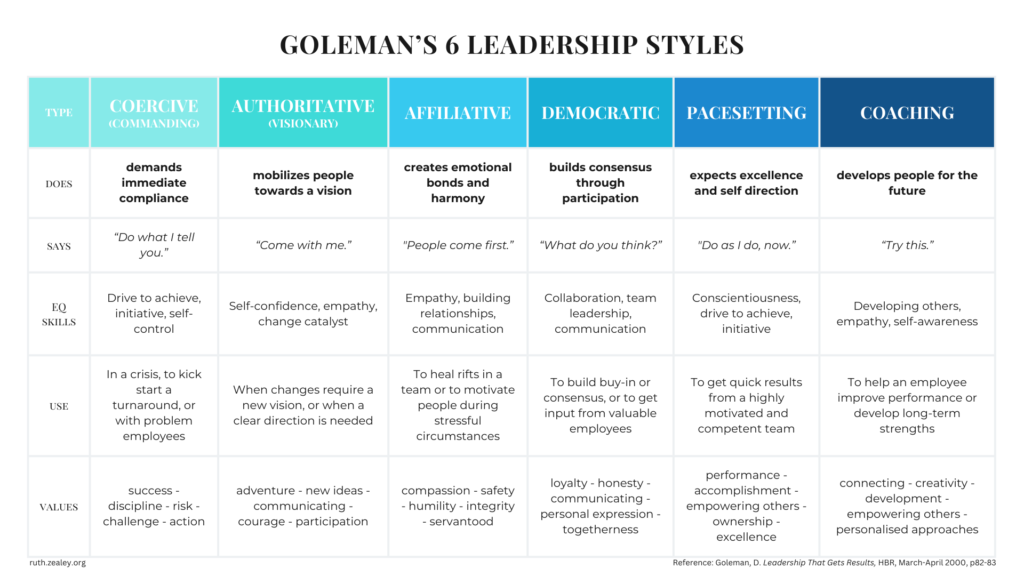
Goleman famously introduces us to 6 styles of leadership that, like golf clubs, he tells us, leaders should have in their bags to reach for according to the shot and result required. Admittedly, golf wouldn’t be my own metaphor of choice, but I get the point.
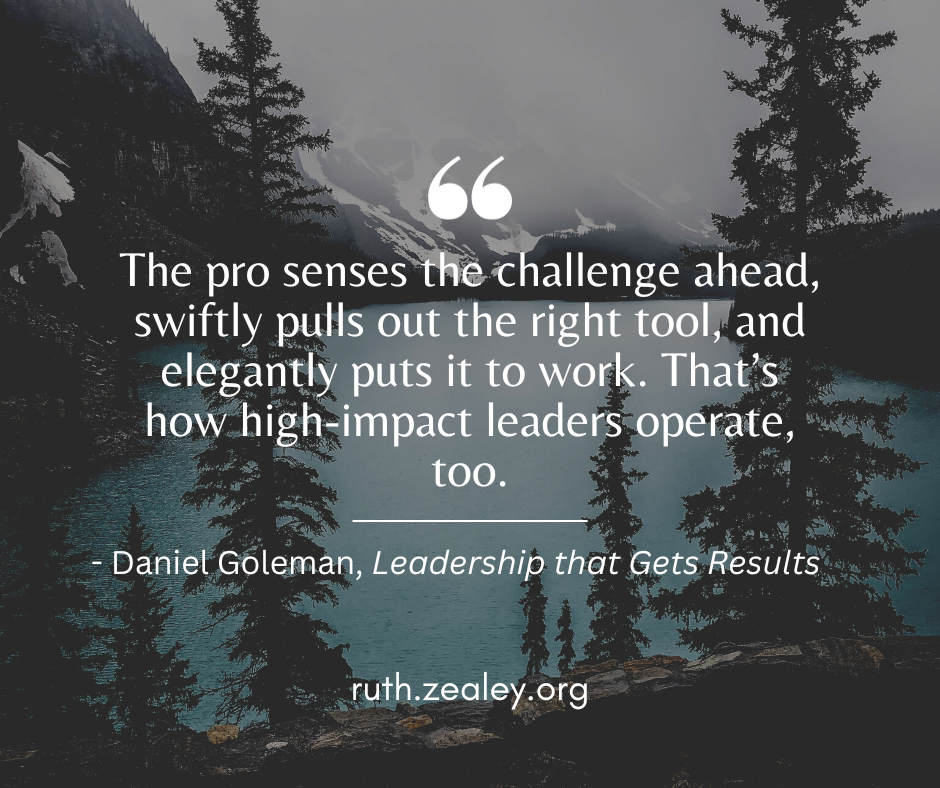
Of course, this idea of choosing the right ‘tool,’ (best say ‘tool’ not ‘club’ I guess) or leadership style, for the situation at hand carries with it some assumptions, namely,
1. that you know how to size up what is facing you & your team, and the style of leadership response that requires;
2. you know what tools (ie. styles) are available and have mastered them; and,
3. that you can, in that moment switch between them to bring about the best results with the appropriate style.
If that’s the case for you, fantastic. But for some of us, or for those we are training in leadership, it’s not so simple. So let’s break this down into some steps we can work through as we evaluate our own leadership for 2024.
1. What’s your ‘go to’ leadership style?
Early on in our leadership trajectory it’s easy to assume that a ‘leader is… X’. We have a gut reaction about what leadership is and how it looks, even if we’re not quite sure where it comes from. This could be an instinctive sense of what leadership ‘could’ be based on our own values or motivation. But it could also be a strong image of a particular leader we have encountered or worked with, and whose shape and style of leadership we might have generalised into our “leader is” belief.
This simplification of the idea gets us going towards something, and momentum is good. We’re beginning to get a vision to work towards of who we want to be. But on the less helpful side it can also lead us either to judge others whose leadership isn’t how we think it ‘ought to be’ OR to disqualify ourselves because we aren’t how we assume leaders ‘ought to’ act, look or behave.
So Goleman’s model is helpful because it takes for granted that leadership has different shapes and styles that each play a unique role.
We broaden our thinking to ask not simply ‘am I a leader?’ but ‘what kind of leader am I?’ and ‘what type of influence does my presence bring to those I am with?’
I really like this shift. Suddenly the conversation has changed from being ‘in’ or ‘out’ of the leadership picture to getting positively curious about what we have, how we are bringing it and the good effect that has. And we apply this perspective not only to ourselves but also to those around us. We are looking for the good and wanting to discover how each person’s contribution creates a purposeful effect.
So, what’s your natural style?
Go back to the 6 Styles diagram above and re-read the style titles.
Which style title most resonates with you as you read it?
Which style do you instinctively want to be known as?
It’s worth saying here that some versions of this use ‘Commanding’ rather than ‘Coercive’. Also ‘Visionary’ rather than ‘Authoritative’, to help capture the nuance of this role beyond Goleman’s original titles which can seem to carry negative undertones.
If you’re not sure from just the titles then:
Examine the EQ skillset.
Goleman’s thesis here (and thrust of a lot of his other work) is that to be able to display and become any of the styles, we first need to develop our emotional intelligence capabilities. We’ll look at the style you want to develop in a minute. But for now, looking at the EQ (Emotional Quotient or Emotional Intelligence) descriptors, think about how those in your team or friendship group would describe you. What characteristics are inbuilt into you?
Your ‘go to’ leadership style will most likely be built upon or produced out of the characteristics that you carry already. Which style most represents the EQ skills you carry in you now?
Finally, if that still doesn’t help then:
Dig into core values.
Look at the values that are beneath each leadership style.
Although it’s not something Goleman looked at in his HBR article, it’s clear from my client interactions that the values we hold deeply determine our motivational drive. We lead from what we believe in.
We need to ask ourselves not just how our style aligns with what’s ‘out there’ but also with what’s ‘in here’ and in me.
It’s important to surface your motivating values that makes your leadership shape not only the effective and useful choice, but also mandated and missional for your bigger purpose. What is the voice that you are called to bring to the world throughout your whole life, not just simply in terms of this project or team specifically. You natural style is likely a part of that bigger life calling.
So, which deeper values most resonate with you on the chart?
When you’ve deduced which style is most likely to be your ‘go to’ or ‘default’, take a moment to list or think through the ways that your style is a blessing and benefit to those you are leading. What have you brought to them because of who you are? What value, assumptions and shape has your leadership modelled and produced among them and within them that is good and worth celebrating?
Seriously.. take a moment to be thankful for the good that you are doing, have done and will do through your natural leadership shape. It’s worth remembering that your natural shape is already bringing and contributing and influencing others for good.
Great.
But not only that. Now we get to develop in other ways to grow our influence and effect even more… let’s take a step further:
2. What or WHO does your team need or the situation require now?
If we’re going to be able to choose our tools for the situation ahead, we need to be able to evaluate where we’re at and what leadership style is required. Leadership is never about the leader. It’s about being able to enable and influence a group of people to bring about a change or development in the world. So our personal development targets for leadership need to come from what will most benefit our community and purpose.
Again, for some of you, this will be instinctive and obvious. Great! But for others of us, or for the sake of making our gut reactions communicable as we train others, let’s look at some ways we can discover this with and for our teams.
We can start by looking at the Team or by examining the Project and Purpose.
As a naturally Affiliative leader I, of course, start by looking at the team.
What stage is your team at?
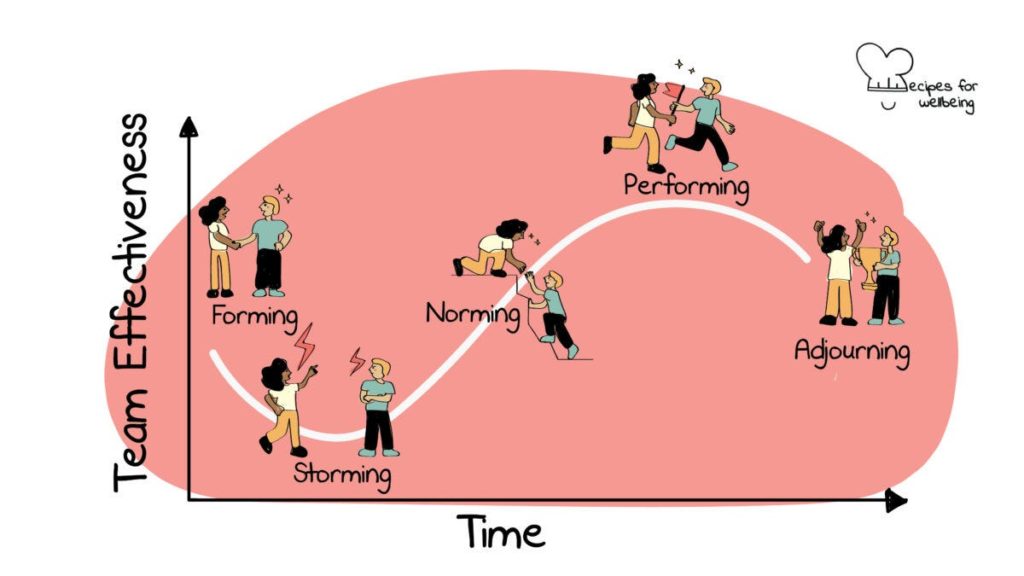
You might want to start with where your team is at to deduce the stage and then style of leadership that would most benefit the team.
For example, if the team is just forming then an Affiliative style with Authorative style might be just the ticket to get the team formed but also going somewhere with vision. Of course, if the team has been around for a long time and is stuck in a rut or have lost drive, then you might need to exercise a Coercive influence or Democratic approach to jump start the team or invite contribution to build commitment again.
A second question would be:
Who is in your team?
It may well be that your team actually needs a variety of approaches from you. Of course, if you are heading up a team of experts or go-getters then Pacesetting leadership or a Democratic approach might work for everyone. But more than likely you’ll have some folks who need Coaching, others who need Commanding, some who want you to be a Pacesetter and others who won’t do the thing unless you’ve spent time with them first.
We’re not saying you need to drain yourself to meet the needs of everyone completely, but that it could be powerful to tailor a more bespoke bias to your leadership depending on who the person is and what they need. Remember, cultural background might also play into this too, as well as expectations of the leader brought from previous roles. If you don’t know what your people are needing or looking for, what would help you to find out?
The more task-orientated amongst us are already getting weary. So another approach would be to consider what you have been asked to do/what your vision is/where you are going and what success for your people will look like and be judged on. What’s the time frame? What needs to happen to accomplish this?
What is the role you have been asked to do? What does success look like to those who hired you?
We can also think about the stage that the project is at that we are working on, either big picture (company turnaround) or small picture (the one project we have especially in mind that we want to deliver well).
John Kotter’s 8 stage process for leading change might be one model that helps you to identify where you currently are in the change process and what might be required as you lead into the next.
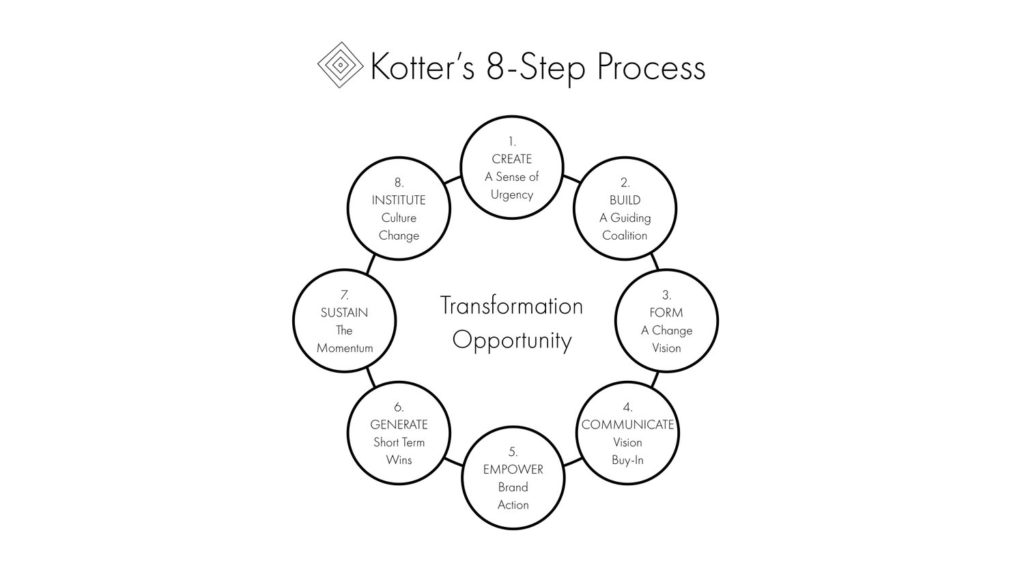
Source accessed 24th Jan 2024
How does your natural style serve the team in the phase you are at?
What else is needed to move the team forward?
Spirituality and Faith purposes
A number of the clients that I work with come from a faith background. If this is true for you then it’s also worth thinking about how your faith makes a difference here and what prayer, meditation or reflective practice, personally or communally, might help you connect with what is being spoken over or called out of you and your team at this point. If you believe in the voice of God, it would make sense that you’d want to hear it right here and now for this issue.
3. Your 2024 leadership growth style.
When you bring all your thinking and answers together, there will no doubt be one or a couple of leadership styles that, were you to grow into these shapes some more, would benefit your team and get you moving to the next phase of growth and change.
It’s worth now thinking about what it will take for you to be able to step into growing this new style.
What resources would be helpful?
As we’ve already mentioned, Goleman’s basic premise was that leadership development hangs and falls on emotional intelligence growth, not so much other skills. So take a look at what EQ competencies are required as a foundation of the style you are looking to develop and ask yourself what will help you to develop them.
Some resources that I recommend in this area are:
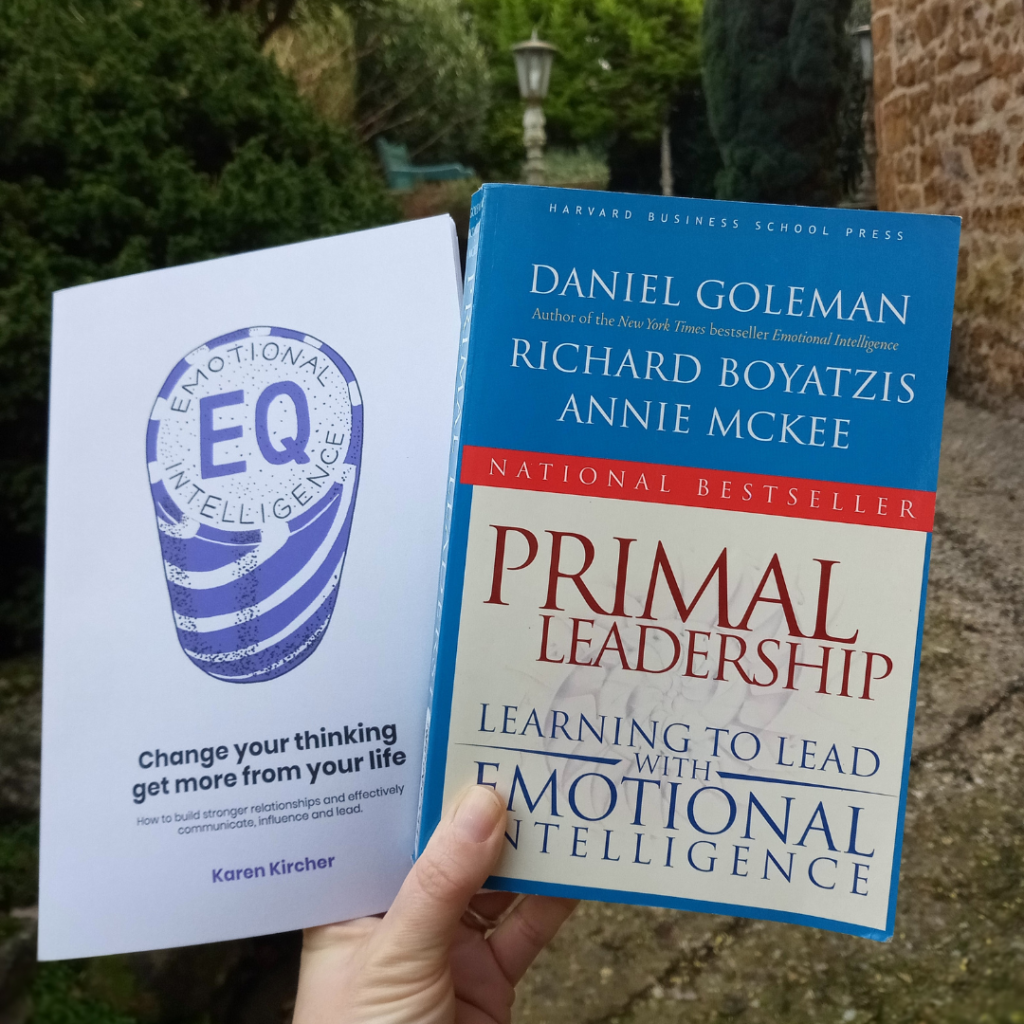
Whose presence alongside you would benefit?
Take a step back and consider those you know in your network who exhibit the style of leadership you are looking to develop. Ask yourself what you could do to learn from them, sit with them or apprentice under them in their path. You might find others from outside your network who can also help.
Walk alongside a leadership coach who can encourage you and keep you accountable as you step into this. Book a free introductory call with us here if you want to learn more about how we could walk with you in this.
Who else could just encourage you as you do this?
What do you want to remember when the default mode kicks back in?
Finally, it’s worth saying that growth takes time and effort. What is the dream you are carrying for yourself and your team as you step into this that makes your effort, time and graft worth it?
The values component of the leadership styles is important because we can sometimes forget that each style does genuinely come from a desire to bring good into the world based on a motivating, driving vision and hope. The style you are developing might not align with your primary heart values, but I am pretty sure that if you dig a little and think about it you can create a connection between the approach of the style you want to develop and a value that really matters to you.
A Leadership Story
I am naturally an Affiliative leader which means that I am oftentimes focused on the well-being and welfare of the team. This is a great thing, but when it comes to stepping into the Authoritative leadership that I know my team need from me right now, my natural bias can scupper me from acting. The line in my head goes, “but I want my team to be happy so if I push for the vision they’ll think I am forgetting them…” This belief means that I can be reluctant to push for vision to focus on team building. My natural focus is to gather people together.
But looking at the members of my team, I’m aware that this highly educated, talented bunch, while wanting me to care for them are also chomping at the bit for a compelling vision to be a part of. While I’m trying to ‘gather in’ the team are wanting to be ‘sent out together’. So stepping into the Authoritative style will actually enhance and bring out my value of “people coming first”. But in a different way than the compassion and safety core principles that I would normally act from.
How about you? How does your 2024 leadership growth style actually align with your core values when you dig a bit deeper?
So there we have it.
Before you click away, take a moment to write down – in the comments, or somewhere for yourself – which style you want to develop, one step that will help you do that and one core value that you want to be the driving force behind your growth.
Keep living courageously!
Photo thanks to Jakob Dalbjörn on Unsplash
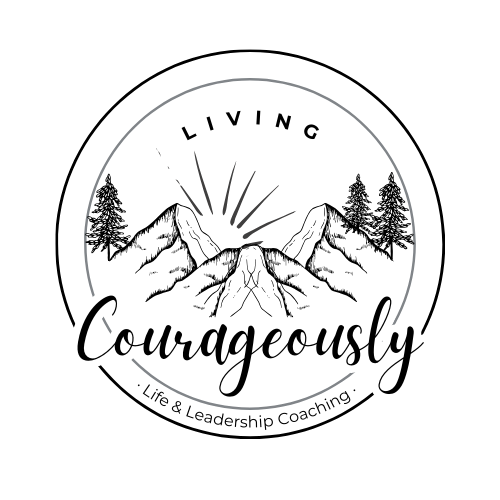

Leave a Reply